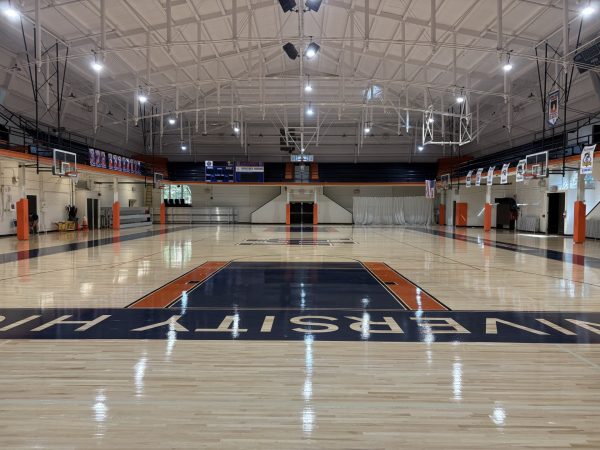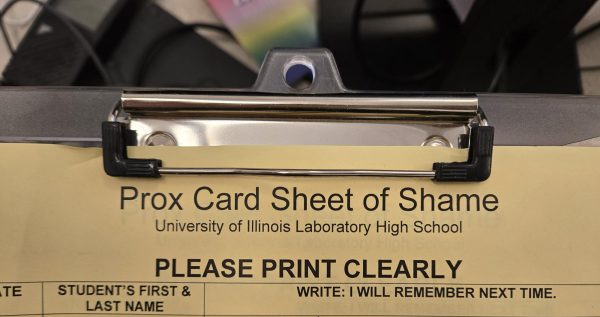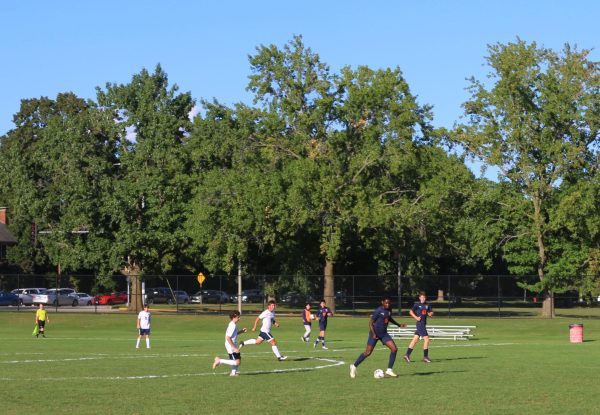Learning in Uni’s New Chem Lab
Uni High’s renovated chemistry lab isn’t just a shiny room of fancy machinery. The lab, finished during the spring semester of 2019, has afforded students new opportunities to learn and experiment. By balancing college-level chemistry equipment with spaces designed for collaboration, it encourages students to self-direct and cooperate when solving problems.
The lab is primarily used by David Bergandine’s chemistry classes. Chem classes used to happen in an adjacent classroom and only use the lab occasionally. Now they take place entirely in the lab, allowing students to experiment and do classwork at the same table. Other classes like Health even use the lab as a classroom when they want access to its technology.
Bergandine stressed the lab’s potential for group work. In the old lab and classroom, group work beyond pairs or trios was nearly impossible because of the cramped setting. But the new lab is more open and contains four large tables, each with six chairs. Each table has its own set of equipment and its own TV, so breaking up the class into small groups is simple and doesn’t require shuffling around of people or glassware.
In addition to helping students learn to collaborate, this small-group setup lets students get through more material in less time. During a recent chemistry class, four different experiments were conducted, one per table. This work used to be done alone or in pairs, because larger groups couldn’t easily share a lab table or hear each other in the chem lab. Equipment was poorly stored, so it would have been difficult to coordinate four separate experiments.
Now, seating is streamlined and equipment is organized, meaning that these groups can all run different experiments and then share their results with the class. No individual person has to do four experiments, and a project that used to take four days only takes one.
The lab has also embraced the potential of digital experimentation and collaboration. Each table has control of a flat-screen TV, which can mirror group members’ computer screens. Students can see what everyone’s working on — and more importantly, so can Bergandine.
Alice Gao, a junior who took chem when the lab was in transition, said that the screens were used for classroom monitoring as well as for group slideshow presentations. Before the lab was remodeled, groups of students almost never got to give presentations or demonstrations of projects they were working on. The only demonstration the current seniors gave was a heat pipe project presentation that took place outside of Uni, said Emma Herzog. But in the new chem lab, it’s easy to display a slideshow on the TV screens, and easy to see what’s going on because of the open layout.
There are still problems being ironed out, though. When Gao’s class started to use the lab, “a lot of the stuff in the bins [got] tangled, or people put stuff in the wrong bins,” she said. Sometimes, bins would fall and glassware would break when tables were moved. But putting labels on bins reduced confusion, and by the end of the year, the system ran much more smoothly.
One promising piece of tech — a microphone that can be thrown across the room to allow quiet people to speak over the AC unit and fume hoods — was only used once, because the class was so focused on small-group work that “we didn’t do that much over-all classroom discussion,” Gao said. But Bergandine said that many people who tour the lab “really like that microphone, and would like to see that in more classrooms.” Classes that are focused on full-class discussion would likely appreciate the mic more than chem class does.
Despite these problems, the new chem lab has made chemistry a vastly different — and better — experience. The mood in the classroom improved after the lab was completed, according to Gao. And Uni is living up to the “laboratory” in its full name: Since we have a college-level chem lab, the UIUC is using this opportunity to test out college curricula and experiments on Uni students.
“Things could happen there that actually make a difference in the community,” Gao said. “We were doing projects that the University wanted us to try.”


